Getting the 500 Internal Server Error in WordPress? You’re not alone. One of the most prevalent difficulties that WordPress webmasters confront is the 500 Internal Server Error, often known as HTTP Error 500.
However, determining the source of this problem is more difficult than it is for other widely encountered HTTP failures. Here’s a fast guide on how to solve WordPress HTTP problem 500 using 11 alternative approaches. Let’s have a look.
Fixing 500 Internal Server Error WordPress
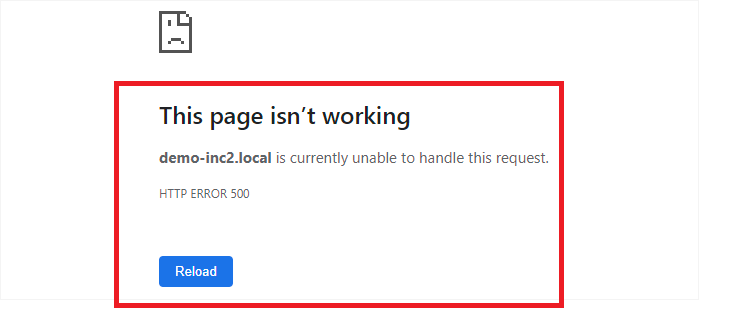
Here are 10 different causes and solutions to fix WordPress 500 Internal Server Error:
1. Using Hostinger AI Troubleshooter
If you’re getting a 500 error on your WordPress website, use hPanel’s AI Troubleshooter to troubleshoot the issue. The program will scan your website for faults, identify the underlying reason, and provide a solution.
Here are the instructions to utilize the AI troubleshooter:
- Access your website’s hPanel and choose WordPress → AI Troubleshooter (beta) on the left sidebar.
- Wait until the AI Troubleshooting tool has finished scanning your website. If it discovers a 500 problem, it will notify you and continue examining your website’s components.
- When done, it will recommend how to correct the error. Click the Fix my website button to let the AI Troubleshooter to do the work for you.
- After the tool has applied the solution, check your website to see if the problem has been resolved. If the issue continues, click the Try another solution option to allow the AI to figure out another solution.

2. WordPress 500 Internal Server Error Due to Bad Plugins
The most common reason of WordPress HTTP error 500 is a new plugin. If your page suffers problems with a fresh installation or update, you may quickly resolve them by deactivating or deleting the plugin.
There are two simple methods to accomplish this: using the WordPress dashboard or File Manager.
If you can still access WordPress from your hPanel, do so and select Security.
- You’ll see a list of installed plugins. From here, click on all of the purple Active buttons to turn all of the plugins Inactive.
- Reactivate each plugin one at a time and test your site after each one.
- If your website is working properly, keep it active. If you encounter the error, you’ll know which plugin is causing the problem.

If you don’t have access to your dashboard, you can also disable or remove plugins through File Manager on your hosting control panel. Here we’re using Hostinger’s hPanel as an example:
- 1. Login to Hostinger hPanel and navigate to File Manager under the Files area.
- Click on the public_html folder and select the wp-content directory.
- Open the Plugins folder and locate the bad plugin. Then, right-click to Rename.
- Rename its directory by adding disabled after the plugin name to turn it off.
- Finally, refresh your website to see if it works.
1. There is always the New Project, the New Opportunity.
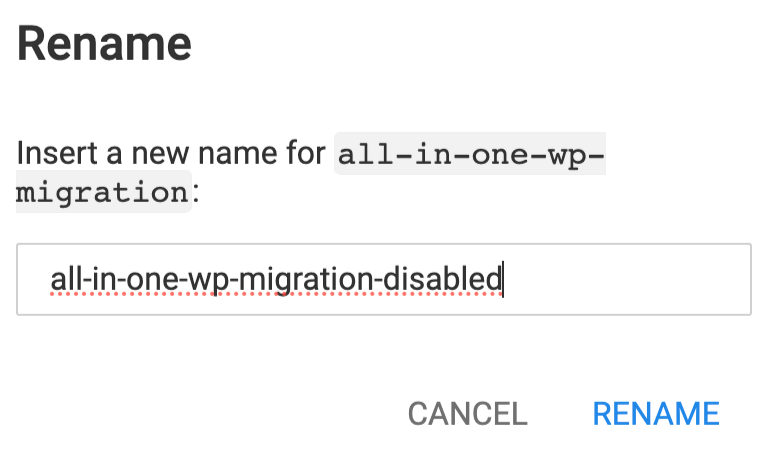
In case the problem persists, repeat the process until all plugins are deactivated or until your website is working again. Once you find out which plugin caused the server error 500, remove it completely and either reinstall it or try to find a substitute that performs the same.
3. WordPress 500 Internal Server Error Due to Themes Installation
A new theme or update is another common cause of HTTP status code 500. To fix it, simply change the existing theme to a new one or change it to one of the default options.
If you can access the WordPress admin area, try to change the WordPress theme.
Alternatively, you can also change themes by editing the MySQL database via phpMyAdmin in the control panel. Here’s how to do it with the hPanel:
- Navigate to phpMyAdmin in the hPanel.
- Once you open it, head to the wp_options table.
- Locate the template and stylesheet rows.
- Click Edit and change the template and stylesheet value with a default theme like Twenty Twenty, and press Go to save changes.
Now, reload your site with the new theme and see if it fixed the issue.
4. WordPress 500 Internal Server Error Due to Corrupted .htaccess File
Another technique to resolve the server error 500 is to verify your current.htaccess file and ensure that it is not damaged. However, you may just start a new one. Here is what you should do:
- 1. Open the File Manager and look for .htaccess in the public_html folder, then disable the file by giving it a different name.
- Once it’s disabled, create a new .htaccess file.
- Right-click on the new file and select Edit.
- Copy-paste the default WordPress .htaccess code into the new one.
- Click Save, and that’s it. You now have a brand new .htaccess file.
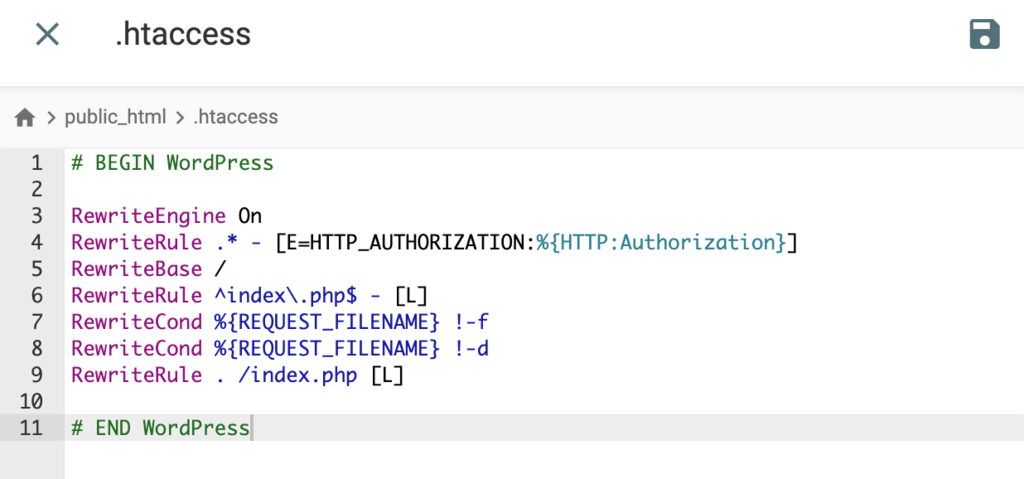
5. Insufficient PHP Limit
Another possible cause of the problem with WordPress is a memory limit or an inadequate PHP value, as scripts and plugins require a specific amount of memory to function.
To fix the RAM restriction, manually change the.htaccess file and increase the PHP limit. Here are the lines we suggest adding:
Plain text
Copy to clipboard
Open code in new window
EnlighterJS 3 Syntax Highlighter
php_value upload_max_filesize 128M
php_value post_max_size 128M
php_value max_execution_time 300
php_value max_input_time 300
php_value memory_limit 256M
php_value upload_max_filesize 128M php_value post_max_size 128M php_value max_execution_time 300 php_value max_input_time 300 php_value memory_limit 256MOnce done, refresh your website. If your HTTP status code 500 is related to insufficient PHP values, this solution will fix the error.
6. Incompatible PHP Version
For certain plugins and scripts to function correctly, a particular PHP version is needed. If the prerequisites are not fulfilled, an HTTP 500 error can show up.
Just log in and navigate to the PHP configurations under the Advanced page to modify the PHP version using the hPanel.
If you are unsure of the required PHP version, consider updating or downgrading. Remember to save the changes and reload your page after making any edits.
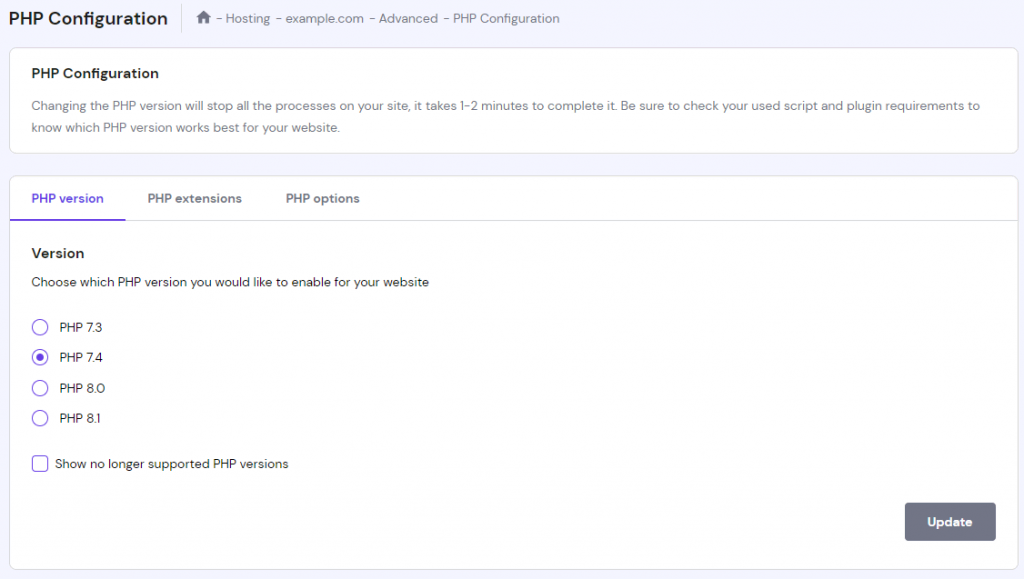
If it still doesn’t fix the issue, change your PHP version to the initial one (which was used at the beginning) and proceed to the next option.
7. Enabling Error Display
Probably the hardest aspect of repairing the WordPress 500 Internal Server Error is figuring out why it is occurring. You may need to look into this further by turning on an error display that helps you identify and locate a specific problem on your website if none of the aforementioned methods worked for you.
Your hosting control panel’s PHP Configuration section makes it simple to accomplish this. Navigate to the PHP Options, check the displayErrors and log_errors columns, and then save by scrolling down. Your website should display the specific after you refresh it.

Alternatively, you can also create a separate error log file and generate entries through the .htaccess file.
8. Using WordPress Debugging
If the step above didn’t work to fix the error in WordPress, it has its own special debugging system that you can use to troubleshoot issues. You can use it to generate an error log in the wp_content folder or to display the error 500 on your site when you access it. All you need to do is to enable the WordPress Debug feature.
9. Restoring a Backup of Your Site
If you have backed up WordPress throughout its operational period, you can also restore the backup. To restore your site, simply delete all of your most current site files and upload the backup again.
To facilitate the re-uploading process, think about utilizing WordPress functions like wp_insert_post and wp_update_post().
Nevertheless, you can utilize a plugin if you prefer not to manually restore WordPress backups. If your website is down, it won’t do much good, but it can help prevent similar problems in the future.
Use the All-in-One WP Migration plugin to build and restore a backup by doing the following steps:
- Install and activate the plugin from the Plugin section.
- Then select the Backups tab.
- Choose Generate a new backup to export your files. Once the process is done, Download the exported files.
- To restore a backup, you will need to delete your current website and install a new WordPress site and the All-in-One WP Migration plugin.
- Then, select the Import feature and upload the backup stored on your computer and proceed with the restoration.
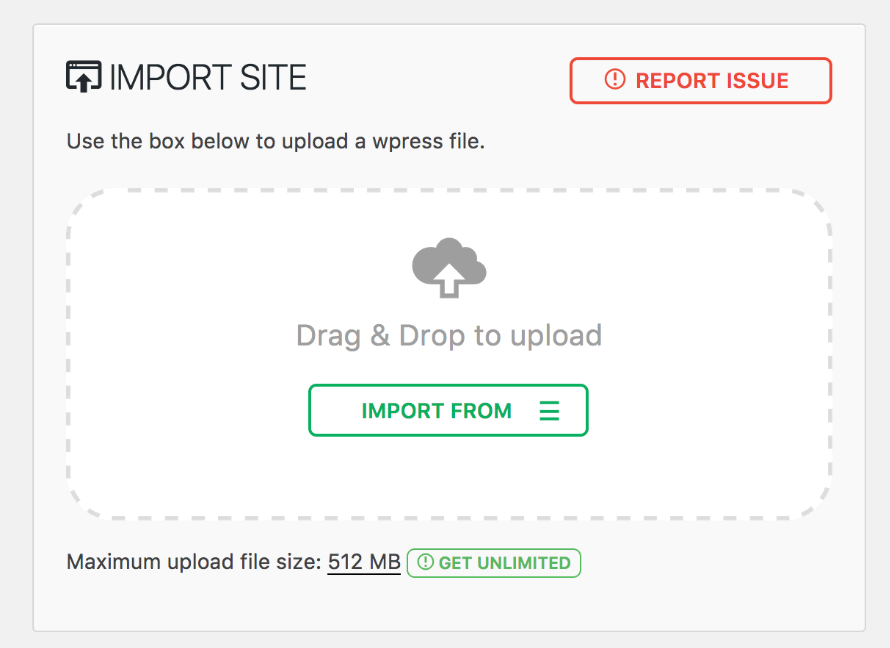
That’s it. Keep in mind that if your site needs more than a 512MB import size, you can upgrade and get unlimited upload and backup sizes by purchasing the plugin’s premium plan for a one-time price of $69.
10. Re-uploading Core WordPress Files
If nothing seems to go right, there is a more extreme option to fix the 500 error. You will be replacing all of the core WordPress files. Here’s how:
- Download the latest version of WordPress and unzip it on your computer.
- Go to the unzipped files and delete the wp-config-sample.php file and the wp-content folder to avoid overwriting any important data.
- Configure FileZilla, move all the WordPress core files to your site’s location, and overwrite the existing ones.
- Once a confirmation screen pops out, check the Always use this action and Apply to current queue only columns. That way, you won’t need to confirm the overwriting process for each file.
- That’s it. You just have to wait for the process to finish.
11. Contacting your Hosting Provider
If at the end of the day, all the methods haven’t been successful and you still can’t solve the issue of the 500 error, then it’s time for some more help. Contact your web hosting customer success team and get some backup.
They will be able to check the server logs and locate the root cause of your issue.
What Causes the 500 Internal Server Error?
The most common reasons behind the Internal Server Error are corrupted .htaccess files, a new theme and or plugin, incompatible PHP version, or a WordPress update.
One of the best things to do when troubleshooting this error is to trace back your steps. Try remembering what specific event caused your site to stop functioning. When you know exactly what went wrong, find the best solution from the list.
500 Internal Server Error Variations
Since there are different web servers, browsers, and operating systems, the HTTP 500 error can appear in many ways. Here are a few variations that you’ll see:
- 500 Internal Server Error
- HTTP 500
- Error 500
- HTTPS 500 error
- Temporary Error (500)
- HTTPS error 500
- HTTP Error 500 – Internal Server Error
- The website cannot display the page – HTTP 500
In addition to the list, you might see a blank white screen or a longer error message asking you to contact the server administrator.
It is becoming more common to have a custom 500 Internal Server Error page as well.
Conclusion
Most who use WordPress have encountered the HTTP error 500 WordPress problem. However, whether you’re an advanced developer, or a beginner, fixing the error is pretty easy if you know what to do.
Here’s a quick recap of the methods we’ve learned today:
- Using Hostinger AI Troubleshooter to quickly identify the error.
- Disabling a corrupted plugin through the WordPress Dashboard or File Manager.
- Changing the WordPress theme to the default one through phpMyAdmin.
- Increasing the memory limit and the PHP limit value via the .htaccess file.
- Changing the PHP version to the latest one with the PHP Configurations tool on the hPanel.
- Enabling the error display through the PHP Options.
- Using the WordPress Debug.
- Restoring a Backup of your site manually or with a migration plugin.
- Re-uploading the Core WordPress files.
There you have it. The 500 Internal Server Error can be scary, but if you follow the steps we provided carefully in this WordPress tutorial, you’ll be able to fix the issue and access your site again in no time. Good luck!
Stay ahead with the latest tech trends, tutorials, and innovation at InnovatTechie.co – connect with us for exclusive updates! Get In Touch

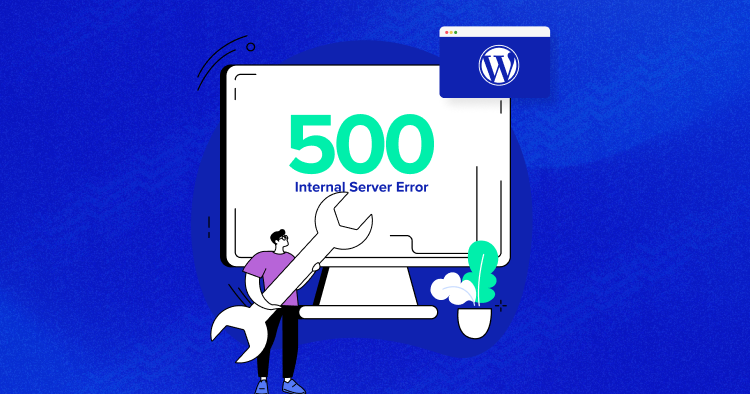
1 Comment
I’m really impressed with your writing skills as smartly as with the format for your weblog. Is that this a paid subject matter or did you modify it your self? Either way keep up the nice high quality writing, it is rare to see a great weblog like this one nowadays!